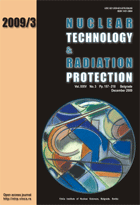
A FAST, PRIMARY-INTERACTION MONTE CARLO METHODOLOGY FOR DETERMINATION OF TOTAL EFFICIENCY OF CYLINDRICAL SCINTILLATION GAMMA-RAY DETECTORS

Vol. XXIV, No. 3, Pp. 157-218
December 2009
UDC 621.039+614.876:504.06
ISSN 1451-3994
....Back to Contents
Pages: 195-203
Authors: Shakeel U. REHMAN, Sikander M. MIRZA, Nasir M. MIRZA
Abstract
A primary-interaction based Monte Carlo algorithm has been developed for determination of the total efficiency of cylindrical scintillation g -ray detectors. This methodology has been implemented in a Matlab based computer program BPIMC. For point isotropic sources at axial locations with respect to the detector axis, excellent agreement has been found between the predictions of the BPIMC code with the corresponding results obtained by using hybrid Monte Carlo as well as by experimental measurements over a wide range of g -ray energy values. For off-axis located point sources, the comparison of the BPIMC predictions with the corresponding results obtained by direct calculations as well as by conventional Monte Carlo schemes shows good agreement validating the proposed algorithm.
Using the BPIMC program, the energy dependent detector efficiency has been found to approach an asymptotic profile by increasing either thickness or diameter of scintillator while keeping the other fixed. The variation of energy dependent total efficiency of a 3"´3" NaI(Tl) scintillator with axial distance has been studied using the BPIMC code. About two orders of magnitude change in detector efficiency has been observed for zero to 50 cm variation in the axial distance. For small values of axial separation, a similar large variation has also been observed in total efficiency for 137Cs as well as for 60Co sources by increasing the axial-offset from zero to 50 cm.
Key words: scintillation detector, total efficiency, point source, Monte Carlo simulation
FULL PAPER IN PDF FORMAT (1.22 MB)
Last updated on September, 2010